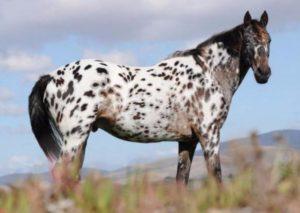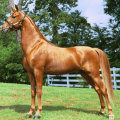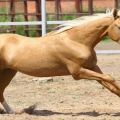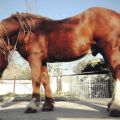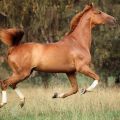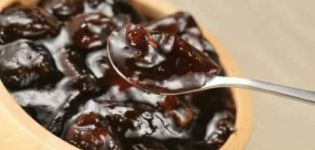Description and breeds of chubar horses, history of appearance and shades of color
All kinds of horses do not exist in this world. Their variety is amazing and makes you admire the perfect beauty of animals again and again. Chubaraya is the original color of the horse. You will never guess what combination of lines and spots Mother Nature has prepared for a playful horse. Each spotted pet is a unique sight.
Historical background
Fans of chubary handsome men adhere to the version of the Central Asian origin of animals. It is believed that the horse saw the light as a result of crossing a salt-colored stallion and a mare of an unknown breed. The first mentions of the unusual horse can be seen in the intricate Chinese drawings. Chubary horses were depicted on vases made of the finest porcelain. The horse was the object of desire of noble people. The commanders and rulers of states considered it an honor to buy a tiger-colored horse.
The Asian warriors firmly believed that a magic horse makes the owner invulnerable, and treated him like a sacred animal. In addition, it was believed that the bright color of the horse can plunge an opponent into horror.
To the chagrin of experts, the chubar color is often called the appaloosa suit, while in Russia this is the name of the breed. The confusion is related to the erroneous translation of textbooks from English into Russian.
Description
Chubara color is characteristic of representatives of different breeds. Some signs are typical for all spotted beauties. The horse's thin, silky skin is decorated with rounded spots. Marks can be located on any part of the animal's body. Often, the pet's eyelids and lips are speckled.
Striped hooves and light sclera of expressive eyes give a special charm to the horse. The characteristic spots on the skin of an animal can change shape and location. The final form of the horse takes only 4 years.
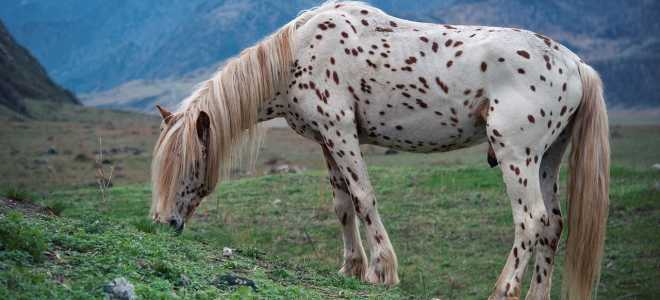
Shades of suit
Despite the general name of the suit, there are a large number of varieties of chubar colors. As real fashionistas, horses with dignity "wear" spectacular patterns on their muscular body.
- Speckled variety of color. The body of the horse is dotted with a large number of small specks.
- Black-and-back suit. It is more often manifested in horses of a black, bay and red color. Large markings are located on the sides or back of the animal. The white color of the spots gives the horse an elegant look.
- Tiger color. It is rare luck to meet a horse with such marks. On the silky surface of the horse's body, strokes and spots of various shapes are splashed. These individuals often show echoes of the wild past: a dark stripe running along the horse's spine, as well as zebra-like markings on the legs.
- Snow coloration.The body of the animal is decorated with large light flakes. This color looks very elegant on a dark background.
- Marble variety. Dark and colored markings form a wavy pattern against the background of the horse's light suit.
- Leopard print. The body of the horse is decorated with spots of a contrasting color.
- Glossy roan. The admixture of platinum hairs in certain parts of the horse's body gives an unusual effect. By and large, this species is difficult to rank among the forelock horses, because animals get a special color with age.
- Trout. Beige horses decorated with white specks can often be found in the United States or Central Asia.
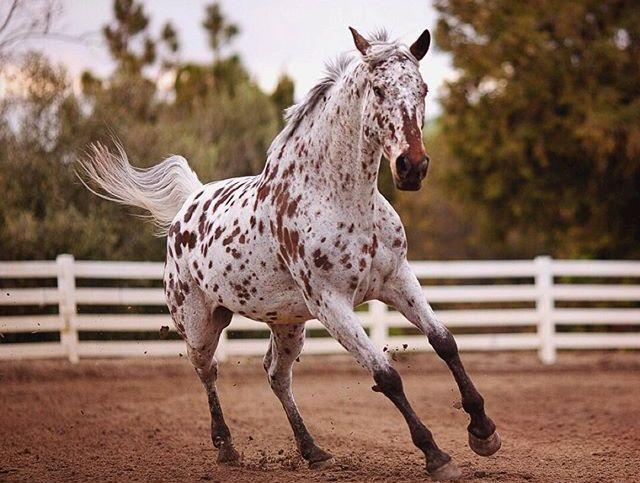
Chubary breeds
The original color is characteristic of several breeds of animals.
- Altai breed of horses. Dark spots densely cover the surface of the animal's body. Occasionally, nature rewards horses with a tiger or leopard color. Under favorable conditions, horses are able to store subcutaneous fat, so they can easily endure frosts. Altai mares are record holders in milk production.
- A little horse called the Argentinean Falabella. A miniature animal cannot boast of an article, because its height barely reaches 90 cm. But an intelligent, affectionate creature often serves as a guide for people with disabilities. Falabella has proven itself as a pet. Representatives of the miniature breed can boast of spotted, bay or roan coloration.
- Mysterious horse Knabstrupper. The pedigree of animals dates back to the 16th century. This is one of the brightest owners of the forelock color. The light coat of the horse is decorated with catchy dark spots. The peculiarity of the color gives the horse an amusing resemblance to a Dalmatian dog. Knabstruppers are loved and appreciated in the circus world. Thanks to their benevolent, docile nature and ability to learn, horses take part in the best circus performances.
- American Appaloosa horse. The dark spots contrast effectively with the pet's flesh tone. Light expressive eyes of the animal effectively emphasize the originality and unique beauty of the horse.
- Pinzgauer breed. Another name for the alpine worker is norik. Due to its powerful constitution, the horse is used for heavy work. The pet accommodatingly transports goods and helps farmers in a harsh climate. The light coat of the animal is decorated with small dark spots.
- Mongolian horse. From the legendary ancestors, the horses inherited a short stature (130 cm), a dumpy physique and a rough structure of wool. These qualities were necessary to survive in the face of continuous battles. Almost all representatives of the Mongolian breed are distinguished by a forelock suit.
- Karabair. As a result of the merger of stallions of eastern origin and Turkmen mares, an amazing breed of horses was born. Karabair is able to pave the way in difficult-to-pass places, stoically endure the vagaries of the weather and overcome obstacles with dexterity. Some historians claim that the ancestor of the Karabai is the horse of Alexander the Great, Bucephalus. The breed is subdivided into 2 groups: harness and horse. Chubaray coloration in carabaiers is manifested only in certain parts of the body.
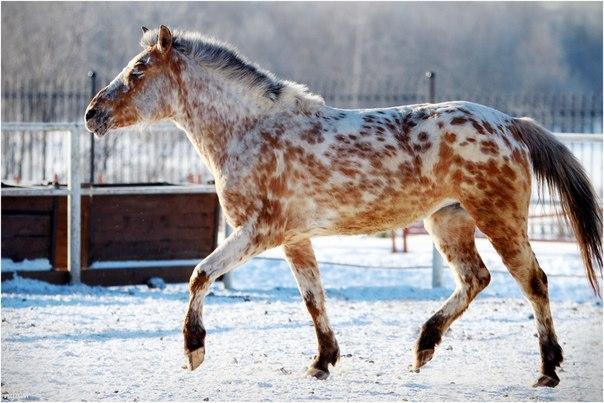
Breeding forelock horses
It is difficult to achieve the birth of a forelock foal. The likelihood of a positive result depends on the presence of a special gene, the breed of the horse and the type of color. For example, it is almost impossible to get offspring of tiger colors. A wild gene cannot be inherited. It is easier to achieve the appearance of the forelock descendants of the Appaloosa, Falabella and Altai horse.
To increase the chances of a positive result, a pair of chubar-colored individuals are crossed.Even under these conditions, there is no guarantee of the appearance of spotted offspring. Even after the birth of a foal, it is impossible to immediately determine the future color of the animal. The spots on the horse appear after a few months. Crossbreeding of representatives of the same breed of piebald color increases the chances of the desired result.
Feeding and maintenance
The health and well-being of the animal depends on the quality of the diet and the conditions of detention. Every day the horse should receive:
- 10-25 kg of hay;
- 5 kg of concentrated feed consisting of oats, corn, barley, rye and wheat.
- 2 kg of bran;
- 3 kg of juicy feed. This category includes: potatoes, carrots, pumpkin, beets, and herbal supplements.
- vitamins and bone meal.
The animal is kept in a spacious, light, ventilated room. The pet is given an individual stall with an area of at least 5 sq. m.
The pet's "apartments" are cleaned daily, and in the spring the premises are treated with an antiseptic. The floor in the stall is covered with straw. A drinker and a feeder are installed in the stall. The horse is provided with access to clean water. 3-4 times a week the horse is taken out for a walk.

